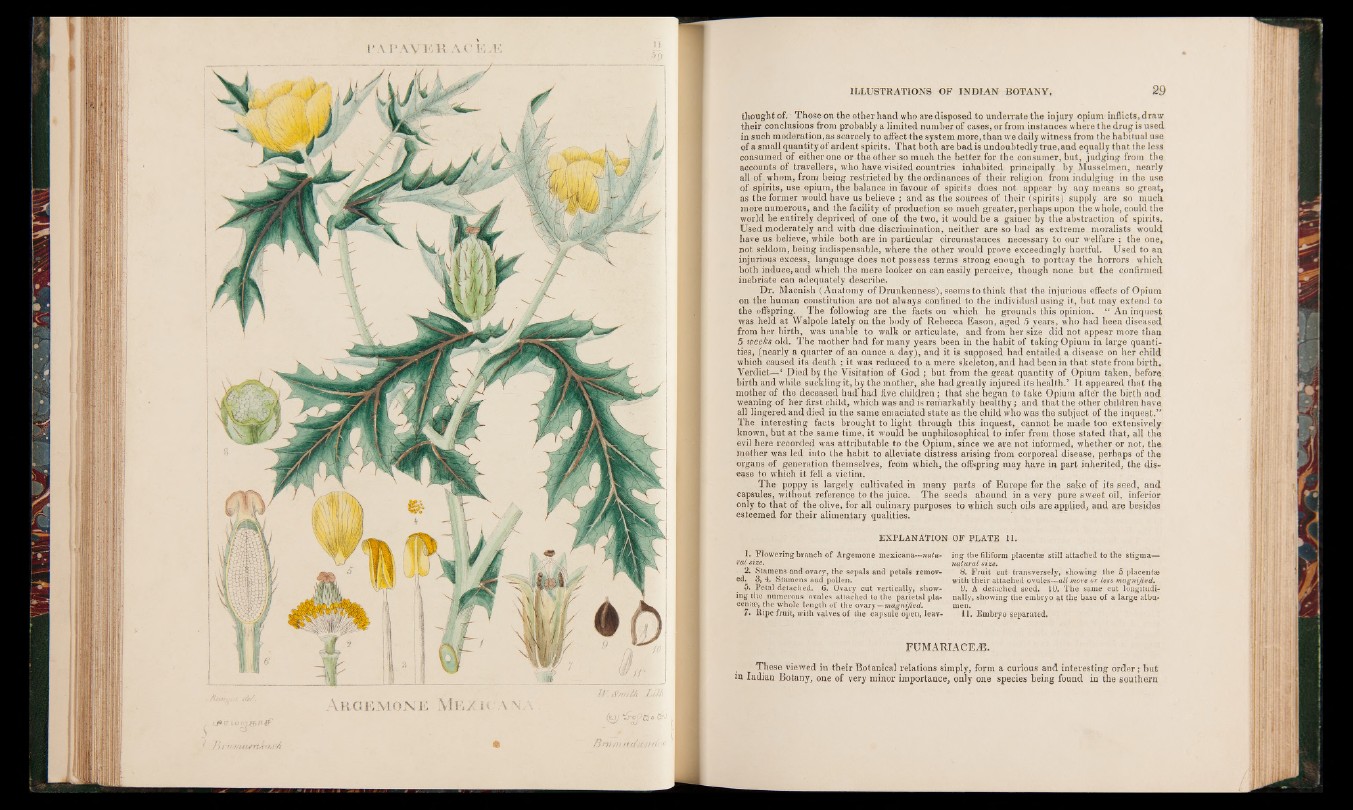
thought of. Those on the other hand who are disposed to underrate the injury opium inflicts, draw
their conclusions from probably a limited number of cases, or from instances where the drug is used
in such moderation,as scarcely to affect the system more, than we daily witness from the habitual use
of a small quantity of ardent spirits. That both are bad is undoubtedly true, and equally that the less
consumed of either one or the other so much the better for the consumer, but, judging from the
accounts of travellers, who have visited countries inhabited principally by Musselmen, nearly
all of whom, from being restricted by the ordinances of their religion from indulgiug in the use
of spirits, use opium, the balance in favour of spirits does not appear by any means so great,
as the former would have us believe ; and as the sources of their (spirits) supply are so much
more numerous, and the facility of production so much greater, perhaps upon the whole, could the
world be entirely deprived of one of the two, it would be a gainer by the abstraction of spirits.
Used moderately and with due discrimination, neither are so bad as extreme moralists would
have us believe, while both are in particular circumstances necessary to our welfare ; the one,
not seldom, being indispensable, where the other would prove exceedingly hurtful. Used to an
injurious excess, language does not possess terms strong enough to portray the horrors which
hoth induce, and which the mere looker on can easily perceive, though none but the confirmed
inebriate can adequately describe.
Dr. Macnish (Anatomy of Drunkenness), seems to think that the injurious effects of Opium
on the human constitution are not always confined to the individual using it, but may extend to
the offspring. The following are the facts on which he grounds this opinion. “ An inquest
was held at Walpole lately on the body of Rebecca Eason, aged 5 years, who had been diseased
from her birth, was unable to walk or articulate, and from her size did not appear more than
5 weeks old. The mother had for many years been in the habit of taking Opium in large quantities,
(nearly a quarter of an ounce a day), and it is supposed had entailed a disease on her child
which .caused its death ; it was reduced to a mere skeleton, and had been in that state from birth.
Verdict— Died by the Visitation of God ; but from the great quantity of Opium taken, before
birth and while suckling it, by the mother, she had greatly injured its health.’ It appeared that tba
mother of the deceased had had five children; that she began to take Opium after the birth and
weaning of her first child, which was and is remarkably healthy; and that the other children have
all lingered and died in the same emaciated state as the child who was the subject of the inquest.*'
The interesting facts brought to light through this inquest, cannot be made too extensively
known, but at the same time, it would be unphilosophjcal to infer from those stated that, all the
evil here recorded was attributable to the Opium, since we are. not informed, whether or not, the
mother was led into the habit to alleviate distress arising from corporeal disease, perhaps of the
organs of generation themselves, from which, the offspring may have in part inherited, the disease
to which it fell a victim.
The poppy is largely cultivated in many parts of Europe for the sake of its seed, and
capsules, without reference to the juice. The seeds abound in a very pure sweet oil, inferior
only to that of the olive, for all culinary purposes to which such oils are applied, and are besides
esteemed for their alimentary qualities.
EXPLANATION OF PLATE 11.
1. Flowering branch o f Argemone mexicana—natural
size.
2. Stamens and ovary, the sepals and petals removed.
3, 4, Stamens and pollen.
5. Petal detached. 6. Ovary cut vertically, showing
the numerous ovules attached to the parietal placentae,
the whole length of the ovary—magnified.
7* Ripe fruit, with valves of the capsule open, leaving
the filiform placentae still attached to the stigma—
natural size.
8. Fruit cut transversely, showing the 5 placentae
with their attached ovules— more or less magnified.
9. A .detached seed. fO. The same cut longitudinally,
showing the embryo at the base of a large albumen.
11. Embryo separated.
FUMARIACEÆ.
These viewed in their Botanical relations simply, form a curious and interesting order ; but
in Indian Botany, one of very minor importance, only one species being found in the southern